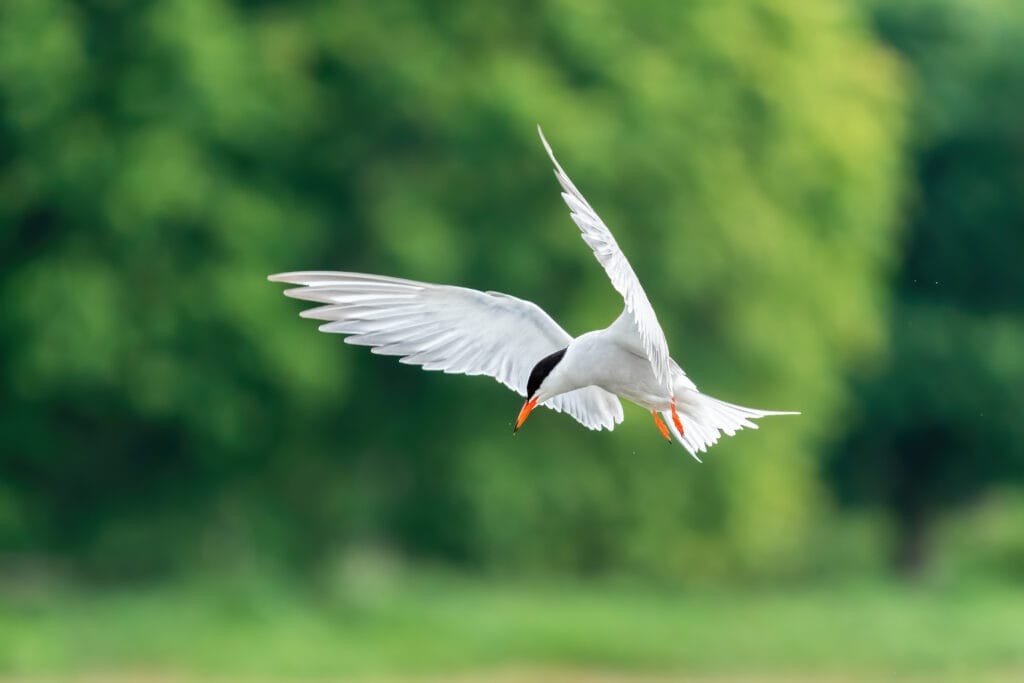The Common Tern is not as common as it name may lead you to believe. In fact, in Maryland, these sleek orange-billed seabirds are actually endangered. Although they are the most widespread terns in North America, a family which consists of diving seabirds with angular shapes and long thick bills, Common Terns are experiencing a steep and troubling decline.
Related Article: Bird Flu Causes Changes in Gannet Eye Color
That is why the breeding colonies and migration rest stops that these birds depend on are so incredibly important. In Maryland, Common Terns once relied upon a series of coastal islands in the Chincoteague Bay. The islands were sheltered by a barrier island, making them ideal nesting grounds. During the winter, storms would flood into the bay and shift sands around, destroying the islands and building up new ones. This pattern was destroyed in 1933 when a hurricane carved a hole in the barrier island. From then on, each year the winter storms destroy the islands with impunity and replacement islands cannot form.
This is why, in May of 2021, after yet another vital nesting island was destroyed, ecologists from the Maryland Department of Natural Resources built a raft. Intended to mimic Common Tern nesting sights, the wooden raft is still in use and has become a flourishing nesting colony.
This year is the third year for the Maryland raft colony. Like years previous, the raft is home to a sizable but delicate colony of Common Tern pairs. This year, a new challenge has presented itself. Teenaged seagulls. According to the scientists monitoring the colony, over a hundred adolescent gulls have landed on the island, threatening to upset the delicate man-made habitat. The gulls are likely just looking for a place to rest, but ecologists have been forced to intervene on behalf of the colony and shoo the gulls away.
That means that this year has seen a number of scientists, protected with bike helmets, sitting on the raft and shooing unwanted visitors. Because they are in such close contact with the breeding terns, scientists are often swooped at, defecated on, and harassed. It is a small price to pay for the survival of the colony.
The seagull problem might be a relatively easy fix, but the unfortunate fact is that the raft is not designed to be permanent solution. It was built as a stopgap to stem the rapid decline of Maryland’s Common Terns. It is expected to last no longer than ten years. Ecologists from the Maryland Department of Natural Resources hope that by the time it is no longer viable, a more permanent artificial colony can be constructed in its place; one that ensures a future for the chicks that began their lives aboard this seabird life raft.
Popular Article: Vultures Act as Early Warning System Against Poachers in Zambia

